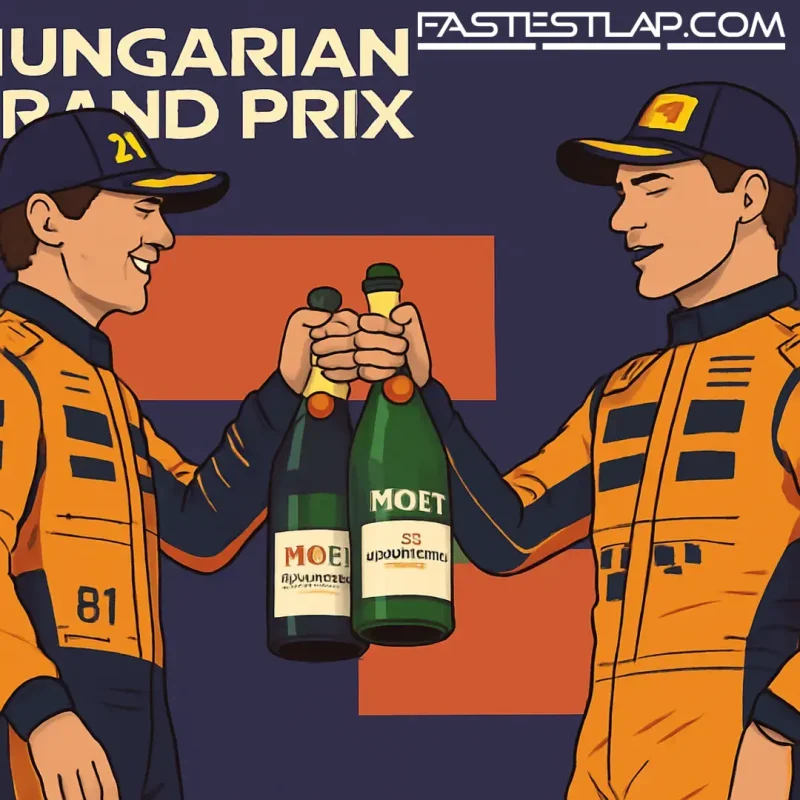McLaren’s soft‑gloves policy has boxed itself in
Lando Norris and Oscar Piastri only needed one corner in Singapore to prove a point McLaren’s been dodging all year. The light kiss between the papaya cars on lap one sent comms into meltdown and columnists into overdrive. “Let them race” became the rallying cry. The truth? McLaren should’ve let them race months ago—or been brave enough to pick a No.1.
The team’s approach in 2025 has been tidy on paper: the car ahead gets priority, don’t hit your teammate, think about the team first. It’s the kind of doctrine that earns nods in a PowerPoint and trouble once the lights go out. It worked when McLaren were climbing back to the front. It doesn’t when both drivers are in a title fight and the MCL is often the quickest thing in the desert.
Drivers aren’t built for corporate equilibrium. F1’s DNA still starts with the Drivers’ Championship. Fans connect to people, not CAD files. The Constructors’ title matters immensely to the factories and the books, but it’s the human story that sells the sport—joy, fury, the ruthlessness required to chase a crown. Ask any racer privately what they’d choose at the end of the year, and you won’t hear much about the trophy that sits in Woking.
McLaren’s “papaya rules” were fine in 2024 when the priority was cohesion. You’ve got two young stars, you keep the peace, you bank points. But 2025 asked a different question: what do you do when both of those drivers can win the whole thing? McLaren tried to hold the middle. Every weekend brought a slightly different interpretation of the same principle. Some days, swaps. Other days, stand your ground. Always with the caveat: don’t crash. That last line held—until it didn’t.
Here’s the uncomfortable bit. Even with the best intentions, “fairness” between two title contenders inside one garage is a mirage. The moment you define it, you start contradicting yourself. Track position is king—until it’s not. “Let them race”—until a strategy offset needs protecting. Every radio nudge carries the weight of precedent the other driver will remember. That’s how you end up with two of the sharpest drivers on the grid feeling like the score is 1–1 in perceived slights before they’ve even hit Turn 1.
No, McLaren isn’t secretly favouring anyone. Andrea Stella doesn’t run that kind of shop, and Zak Brown’s whole rebuild has been built on trust and talent. But the attempt to keep the scales perfectly level has created the very tension it sought to avoid. It’s the paradox of success: the more dominant your car, the less room there is for hedging.
So what should they have done? Pick a lane. The ruthless option is the honest one: nominate a lead driver once the picture is clear—by points, form, whatever metric you deem fit—and live with the backlash. Or go the other way and bin the traffic‑cop act entirely. Set hard boundaries, make the penalties for teammate contact painful, and let them go. Live or die by the code. No mid‑race moral arbitration, no “reminders” when the fight gets spicy.
Singapore didn’t change the championship. It changed the optics. The brush between Norris and Piastri simply exposed the fragility of a policy that relies on perfect execution and perfect restraint from two drivers who’ve spent their lives being told to be selfish. That’s not criticism; that’s the job description of an elite F1 racer.
The knock‑on is obvious. Every time McLaren hesitates, rivals smell blood. Strategy calls get muddied when you’re trying to manage two races inside one garage. And if the title goes down to a handful of points, the regret will be brutal. You can’t control safety cars; you can control your own rulebook.
There are still enough laps left this season for McLaren to reset the tone. Go transparent. Publish the rules of engagement to the drivers on a single sheet of paper and stick to it—whatever it is. Tell them what happens on lap one, on an undercut, on a tyre offset. Clarity beats vibes when the stakes are this high.
McLaren have built a rocket ship and paired it with two drivers capable of delivering a championship. That’s the hard work done. The easy part, strangely, is the bit they’ve complicated: trust your racers, or tell one of them he’s the spearhead. What you can’t do is keep changing the temperature of the room and expect no one to sweat.
If Norris and Piastri are going to take the gloves off now, fine. Better late than never. But imagine how different this season might look if the gloves were never on at all.




